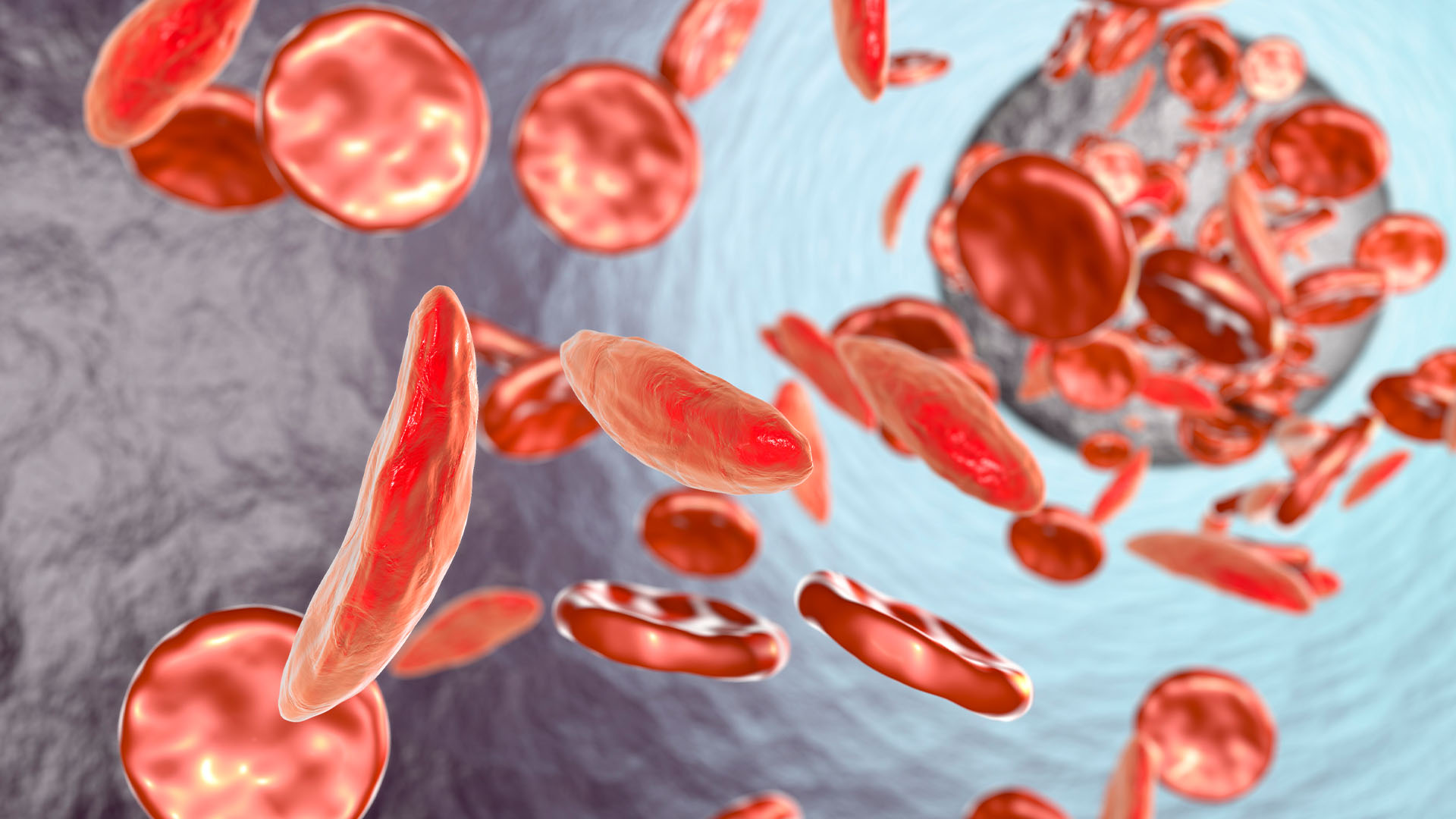New Study Links Menstrual Cycle Stages to Pain Crises in Sickle Cell Disease
Published
sickle cell disease.
(Image credit: KATERYNA KON/SCIENCE PHOTO LIBRARY via Getty
Images)
For women living wiht sickle cell disease (SCD), pain crises are a harsh reality. These excruciating episodes occur when
sickle-shaped red blood cells obstruct blood flow, depriving tissues of vital oxygen. A new study published in the journal
Blood Vessels, Thrombosis & Hemostasis on April 9, 2024, sheds light on a potential trigger for these crises:
hormonal fluctuations during the menstrual cycle.
Sickle cell disease (SCD), affecting approximately 100,000 Americans, is a group of inherited blood
disorders that distort red blood cells into a crescent or “sickle” shape. This abnormal shape hinders their ability to
carry oxygen efficiently and causes them to become trapped in small blood vessels. The National Heart, Lung, and Blood
Institute (NHLBI) highlights that this can lead to anemia, increased vulnerability to infections, and damage to vital
organs.
The blockage of blood vessels caused by these misshapen cells results in intense pain episodes known as vaso-occlusive
episodes (VOEs), frequently enough requiring hospitalization. VOEs are the most common type of pain
crisis experienced by individuals with SCD, as noted by the Cleveland Clinic. These episodes can significantly
impact a patient’s quality of life, affecting their ability to work, attend school, and engage in everyday activities.
Compounding the challenges, research has consistently shown that women with SCD experience more frequent and severe voes
compared to their male counterparts. Emerging evidence suggests these painful episodes correlate with specific phases of
the menstrual cycle,particularly during menstruation. However, the precise molecular mechanisms driving this cyclical
pattern remain elusive, hindering the development of targeted pain management strategies.
Inflammation and the Menstrual Cycle
Researchers at the University of Pennsylvania have uncovered a critical link between inflammation and the menstrual cycle
in women with SCD. Their study reveals that C-Reactive protein (CRP), a key marker of inflammation, exhibits dynamic
fluctuations during the menstrual cycle in women with SCD. specifically, CRP levels rise during the first half (follicular
phase) of the cycle and later decline in the latter half (luteal phase).
The menstrual cycle is often overlooked in research and clinical care, but can interact with health in important ways,
as we are seeing in SCD,
stated Dr.Andrea Roe, an
assistant professor of obstetrics and gynecology at the University of Pennsylvania and senior author of the study, in a
statement. this highlights the importance of considering hormonal factors in managing SCD-related
pain in women.
To understand the underlying mechanisms, the researchers analyzed blood samples from over 30 patients, measuring CRP
levels, other inflammatory markers, inflammatory cell counts, and hormone levels. Their findings demonstrated a significant
correlation between elevated CRP levels and fluctuating sex hormone levels in women with SCD. Notably, these CRP
fluctuations were significantly more pronounced than those observed in women without SCD.
The study pinpointed the follicular phase, which spans from the onset of menstruation to ovulation, as the period of
heightened CRP levels. Conversely, CRP levels decreased during the luteal phase, the period between ovulation and the start
of the next menstrual cycle.
This finding marks a significant step forward, providing researchers and clinicians with a more precise target for
designing pain interventions tailored to women with SCD. By understanding the interplay between the menstrual cycle and
inflammation, healthcare professionals can potentially develop more effective strategies to mitigate pain crises.
| menstrual Phase | Hormone Levels | CRP Levels in SCD | potential Impact on Pain |
|---|---|---|---|
| Follicular Phase (Days 1-14) | Estrogen rising | Increased | Potentially exacerbates pain crises |
| Luteal Phase (Days 15-28) | Progesterone rising, Estrogen declining | Decreased | Potential for reduced pain, though individual responses vary |
Potential Therapeutic avenues
The study authors suggest that hormonal contraceptives, which suppress menstruation and hormonal fluctuations, could offer a
promising avenue for managing inflammation and reducing pain in women with SCD. These medications could potentially
stabilize hormone levels,thereby mitigating the cyclical surge in inflammation observed during the follicular phase.
However, it’s crucial to acknowledge that hormonal contraceptives may not be suitable for all women with SCD. Factors such
as age, medical history, and individual preferences should be carefully considered when making treatment decisions. A
thorough discussion with a healthcare provider is essential to weigh the potential benefits and risks.
SCD is a really debilitating and painful disease,
said Dr. Jessica Wu, an obstetrics and gynecology physician at the University of Pennsylvania and lead
author of the study, in the statement.
The more data we have about how it presents in female patients, the better we can counsel them on anticipating and
managing their pain.
Future Research Directions
Looking ahead,the researchers are committed to expanding their sample sizes and investigating additional markers of SCD in
relation to menstrual cycle changes.This extensive approach will provide a more nuanced understanding of the intricate
relationship between SCD, inflammation, and hormonal fluctuations.
Moreover, it is crucial to conduct studies in diverse populations, particularly in low- and middle-income countries where
SCD is most prevalent. This will ensure that scientific advancements are globally accessible and that treatment strategies
are tailored to the specific needs of these communities.
Ultimately, the hope is that this kind of work can shape treatment recommendations,
said Sharma.
Given that most individuals with sickle cell disease live in middle- to low-income countries,I look forward to future
studies conducted in these settings that will bridge scientific advances globally for the management and prevention of
acute vaso-occlusive pain associated with menstruation.
The findings of this study represent a significant step forward in understanding the complexities of SCD and its impact on
women’s health. By acknowledging the interplay between the menstrual cycle and inflammation, healthcare professionals can
strive to provide more personalized and effective care, ultimately improving the quality of life for women living with this
challenging condition.








